
The Cerro del Bu is an archaeological site in the Bu hill of the Spanish municipality of Toledo, located on a promontory next to the Tagus river.

The Cerro del Bu is an archaeological site in the Bu hill of the Spanish municipality of Toledo, located on a promontory next to the Tagus river.
The site is located on the hill that gives it its name, which stands on the left bank of the Tagus, south of the city of Toledo. On the surface, the hill had construction stones with ostensible foundations on a ground that, at first glance, was seen to be unnatural. [1]

Its location, isolation and steep relief gives the place a strategic nature and privileged natural defense, suitable for settlement of human groups. The research campaigns that regularly carried out on the site, since 1980, revealed a series of consecutive phases in the occupation of the hill. The first phase of settlement would be characterized by the existence of a large quantity of flint carving remains and few ceramic fragments. Its chronology would be doubtful. The second, best documented corresponds to the main time of habitat use, in full development of the Bronze Age in the Meseta Central. The third marks the final phase of the habitat of the aforementioned Bronze Age. In these last two phases, from which habitation structures and cottages and even homes "in situ" have been discovered, an eminently pastoral economy was developed, with the primacy of cattle sheep and bovine. Later there was a medieval settlement, Arab, small and provisional, that responded to a strategic and military conception. From this stage remains are preserved on the top of the hill. The end of this Arabs settlement could be interpreted as an intentional destruction, since although levels of ash are found, the walls would have collapsed before any sign of fire. [1]
Cerro del Bu was declared a Bien de Interés Cultural by the autonomous community with the category of archaeological zone on April 28, 1992, by means of a decree published on May 20 of that same year in the Official Gazette of Castile-La Mancha . [1] [2]

Toledo is a city and municipality of Spain, the capital of the province of Toledo and the de jure seat of the government and parliament of the autonomous community of Castilla–La Mancha.

Castilla–La Mancha is an autonomous community of Spain. Comprising the provinces of Albacete, Ciudad Real, Cuenca, Guadalajara and Toledo, it was created in 1982. The government headquarters are in Toledo, which is the capital de facto.
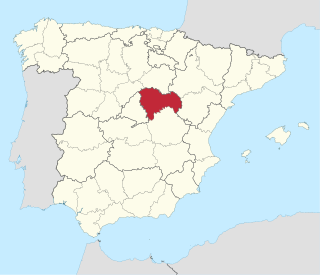
Guadalajara is a province of Spain, belonging to the autonomous community of Castilla–La Mancha. As of 2019 it had a population of 258,890 people. The population of the province has grown in the last 10 years. It is located in the centre of the Iberian Peninsula.
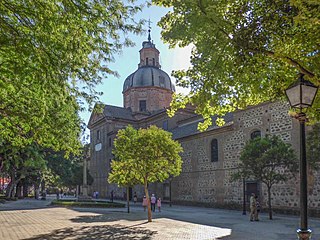
Talavera de la Reina is a city and municipality of Spain, part of the autonomous community of Castile–La Mancha. Its population of 83,303 makes it the second most populated municipality of the province of Toledo and the fourth largest in the region.

Úbeda is a municipality of Spain located in the province of Jaén, Andalusia.

Alcalá del Júcar is a Spanish municipality located in the southeastern part of the Iberian Peninsula, within the Province of Albacete, in the autonomous community of Castile-La Mancha. It has a population of 1,148 inhabitants. The town, situated 64 kilometres from Albacete, was declared Conjunto histórico in 1982.

The Carpetani were one of the Celtic peoples inhabiting the Iberian Peninsula prior to the Roman conquest. Their core domain was constituted by the lands between the Tagus and the Anas, in the southern Meseta. Agriculture is thought to have had a greater importance in the Carpetanian economy than other neighboring peoples'.
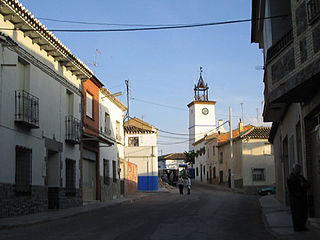
Camuñas is a municipality located in the province of Toledo, Castile-La Mancha, Spain. According to the 2018 census (INE), the municipality had a population of 1,740 inhabitants.
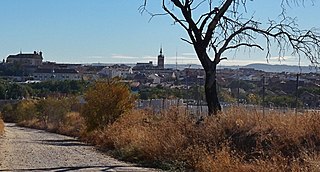
Illescas is a town and municipality of Spain located in the province of Toledo, Castilla–La Mancha. The municipality spans across a total area of 56.75 km2 and, as of 1 January 2020, it has a registered population of 30,229, which makes it the third most populated municipality in the province. It belongs to the traditional comarca of La Sagra.
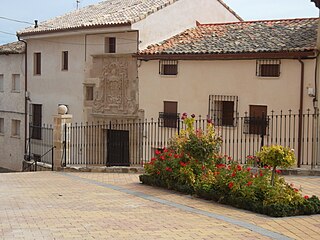
Millana is a municipality located in the province of Guadalajara, Castile-La Mancha, Spain. According to the 2004 census (INE), the municipality has a population of 158 inhabitants.
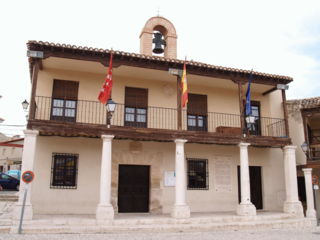
Colmenar de Oreja is a town and municipality of the Las Vegas comarca, in the Community of Madrid, Spain. It was subject to a seven-month siege in 1139.

Cerro de las Cabezas is an archaeological site of Ibero-Oretani origin, located about 8 km south of the present-day city of Valdepeñas, in the province of Ciudad Real. The site is located on a hill approximately 800 metres high, and covers the area between the summit and the eastern slope, an area that has been partially destroyed by the construction of the Autovía A-4 that links Madrid with Andalusia.
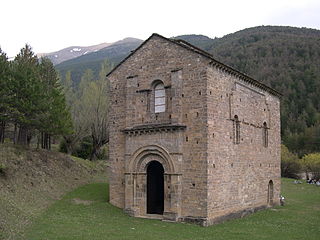
A bien de interés cultural is a category of the heritage register in Spain. The term is also used in Colombia and other Spanish-speaking countries.

The Museum of Santa Cruz is an art, archaeology and ethnographic museum located in the historic centre of the city of Toledo, Spain. It exhibits collections pertaining to the province of Toledo, including works painted by El Greco in the city of Toledo.

Segóbriga was an important Celtic and Roman city, and is today an impressive site located on a hill near the present town of Saelices. Research has revealed remains of important buildings, which have since been preserved and made visible in the Archaeological Park. It was declared a National Monument on June 3, 1931, and is now considered cultural heritage under the official denomination Bien de Interés Cultural which comes with extensive legal protections.
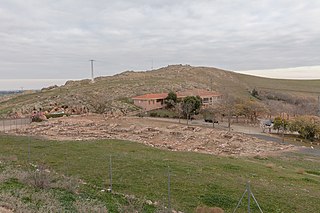
Alarcos is a small hill and archaeological site located in the Campo de Calatrava region of the Iberian Peninsula. Standing at 685 metres above mean sea level, the hill is made of quartzite rocks together with lithic components of volcanic origin, and the Guadiana river flows next to it. It features an archaeological site on top, in between the Spanish municipalities of Poblete and Ciudad Real. The archaeological sites features a Bronze/Iron Age Iberian oppidum, as well as a phase of medieval occupation, which includes the Castle of Alarcos. The site was declared Bien de Interés Cultural in 1992.
There are remains of two Roman aqueducts which supplied the Roman city of Toletum in Castile-La Mancha, Spain. The infrastructure carried water from various sources with the main reservoir located at Mazarambroz to the south of the city in the Montes de Toledo Comarca.

The monastery of Santo Domingo Real, located in the city of Toledo, in Castile-La Mancha, Spain, is a convent founded in 1364 by the noblewoman Inés García de Meneses, daughter of García Suárez de Meneses and María Fernández Barroso, after being widowed by Sancho de Velasco.

The Castle of La Muela is a castle in Consuegra, Spain. It was a stronghold of the Knights Hospitaller during the Middle Ages.
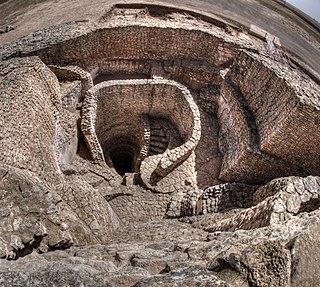
The Motilla del Azuer is a prehistoric fortification dating from the Bronze Age in the municipality of Daimiel, in the Province of Ciudad Real, Castilla–La Mancha, Spain.
{{cite book}}: CS1 maint: location missing publisher (link)